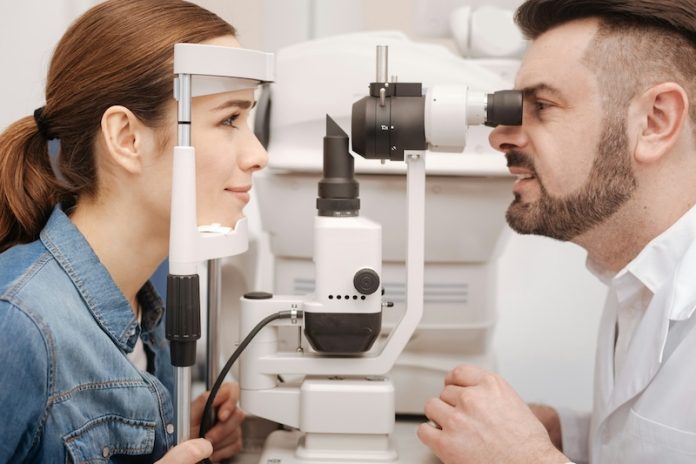
A new study from Mass Eye and Ear suggests that people taking semaglutide, a drug sold as Ozempic and Wegovy, may have a higher risk of developing a rare but serious eye condition that can cause permanent vision loss.
This condition, called NAION (non-arteritic anterior ischemic optic neuropathy), occurs when blood flow to the optic nerve is reduced, leading to sudden and often irreversible blindness in one eye.
The study, led by Dr. Joseph Rizzo, a neuro-ophthalmologist at Mass Eye and Ear and a professor at Harvard Medical School, found that people with diabetes taking semaglutide were more than four times as likely to develop this condition compared to those taking other diabetes medications.
For people using semaglutide for weight loss, the risk was even higher—more than seven times the normal rate. The findings were published in JAMA Ophthalmology on July 3, 2024.
NAION is relatively rare, affecting about 10 out of every 100,000 people in the general population. It is the second most common cause of optic nerve blindness, after glaucoma, and is currently untreatable. Symptoms usually appear without pain and progress over several days before stabilizing, with little chance of improvement.
The idea for the study came in late 2023, when doctors at Mass Eye and Ear noticed an unusual pattern—three patientsin one week were diagnosed with NAION, and all three were taking semaglutide. This observation led the team to investigate whether the drug could be linked to a higher risk of this rare eye disease.
To examine this, the researchers analyzed medical records from more than 17,000 patients treated at Mass Eye and Ear over the past six years. They focused on patients diagnosed with diabetes or obesity, comparing those who had been prescribed semaglutide to those taking other diabetes or weight loss medications.
Their analysis showed a significant increase in NAION cases among semaglutide users, strengthening concerns that the drug may contribute to the development of this condition.
Semaglutide was originally developed to help people with type 2 diabetes manage their blood sugar levels. However, because it also promotes weight loss, it quickly gained popularity as a weight-loss medication under the brand Wegovy.
Since its release as Ozempic in 2017, and later as Wegovy in 2021, millions of people worldwide have started using the drug for both diabetes management and weight loss.
Despite the study’s concerning findings, the researchers caution that their results do not prove that semaglutide directly causes NAION. They acknowledge several limitations in their research. First, Mass Eye and Ear specializes in treating rare eye diseases, so their patient population may not reflect the general public.
Second, their study included mostly white participants, meaning the results may not apply equally to people of all racial and ethnic backgrounds. Third, NAION cases were still relatively few, so small statistical changes could impact results. Finally, they could not confirm if all patients consistently took their prescribed medication, which could affect the results.
While this study highlights a potential risk, Dr. Rizzo and his team emphasize that more research is needed to fully understand the connection between semaglutide and NAION. They call for larger studies with more diverse participants to confirm their findings and explore why the risk appears different between diabetes and weight-loss patients.
For now, patients taking Ozempic or Wegovy should not panic but should be aware of the potential risk. Anyone considering or already using semaglutide should discuss the findings with their doctor, especially if they have other optic nerve conditions like glaucoma or a history of vision problems.
While semaglutide has proven benefits for weight loss and diabetes management, this study introduces a new factor to consider when making treatment decisions. The next step in research is to determine whether this risk applies to a larger population and whether certain people are more vulnerable than others.
Until then, patients should remain informed and have open discussions with their healthcare providers about their options.
If you care about diabetes, please read studies about a cure for type 2 diabetes, and these vegetables could protect against kidney damage in diabetes.
For more information about diabetes, please see recent studies about bone drug that could lower risk of type 2 diabetes, and results showing eating more eggs linked to higher risk of type 2 diabetes.
The research findings can be found in JAMA Ophthalmology.
Copyright © 2025 Knowridge Science Report. All rights reserved.



